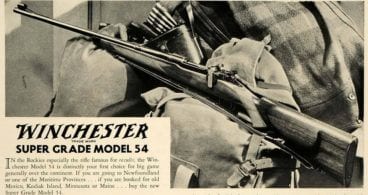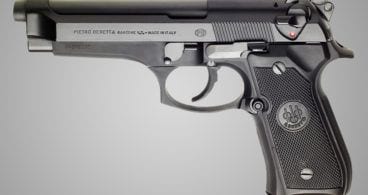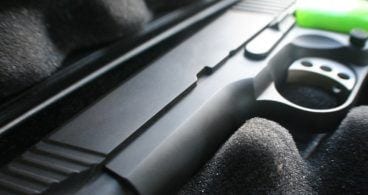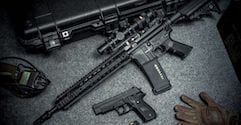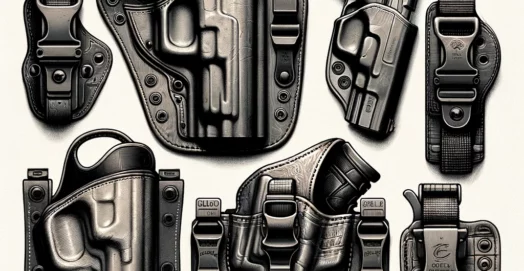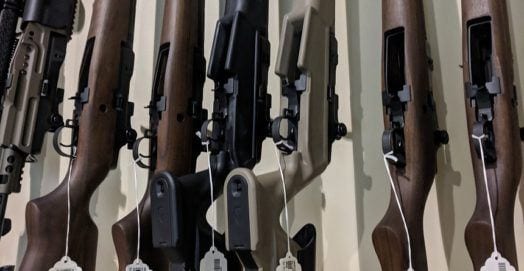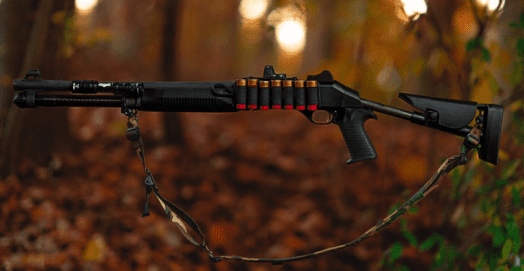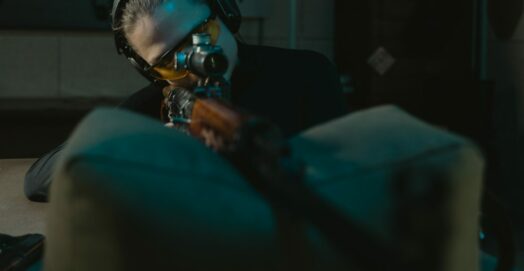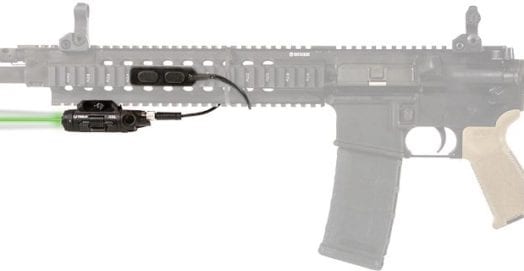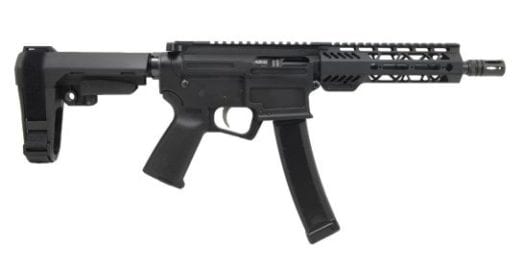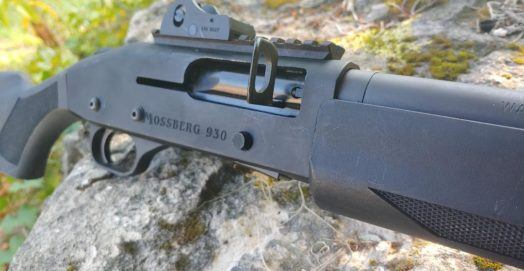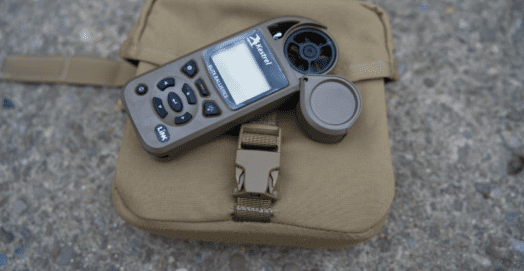Guide to the Different Types of Pistols and Handguns

Looking to learn more about the different types of pistols?
Semi-Automatic Handguns are well established as the majority of firearms in this country. 72% of firearm owners in the country own a handgun. And with the more recent surge of AR15 style handguns and others styled like this, the number will skew up even more. Handguns are defined by the ATF as:
“The term “Pistol” means a weapon originally designed, made, and intended to fire a projectile (bullet) from one or more barrels when held in one hand, and having: a chamber(s) as an integral part(s) of, or permanently aligned with, the bore(s); and a short stock designed to be gripped by one hand at an angle to and extending below the line of the bore(s).”
Contents

Semi-Automatic is defined by the ATF as a weapon (in this writing’s case, a rifle) that is designed to,
“fire only a single projectile through a rifled bore for each single pull of the trigger”
The reason I define this is that we are more specifically talking about handguns that are more similarly related to traditional pistols, and not the ones that are more related/look like their rifle cousins.
Handguns are made in a number of different shapes, sizes, calibers, colors and actions. We will go over a few broad categories regarding these guns.
Caliber
The major calibers for semi auto handguns in the US, and some common uses of them are:
- .22lr
- Target shooting, varmint hunting, beginning shooter training
- .380ACP
- Target shooting, small gun self defense
- 9mm Luger
- Target shooting, self-defense, varmint hunting, competition
- .40SW
- Target shooting, self-defense, competition
- .45ACP
- Target shooting, self-defense, competition, hunting sidearm
There are of course more calibers than this, from .17HMR up to .50AE, but these are the calibers responsible for the vast majority of handgun chamberings.
Action Types of Pistols
There are two ways of operating a semi auto pistol, blowback and locked breech. There are a few subtypes of locked breech operation as well.
Simple blowback is an operation for self-loading firearms that obtains energy from the motion of the cartridge case as it is pushed to the rear by expanding gas created by the ignition of the propellant charge. What this really means is that the slide, which is has mass, and the spring of the slide holds the action closed until the pressure in the chamber is reduced to the point that it can be opened safely.
This design works well for many handgun calibers, but the slide mass and spring force become an issue when working with larger calibers. .380ACP is commonly regarded as the largest handgun caliber that is realistic to use with straight blowback handguns that are small. There are other ways to delay the blowback of the slide, such as gas delayed blowback and chamber ring delay, but those are far less common. Both of those systems use gas pressure to keep the slide stationary while the chamber pressures are high.
Locked breech operation employs a mechanism to hold the breech closed on the handgun until the pressure in the chamber has dropped to a safe level. This can be done in many ways such as tilting barrel, roller delay, rotating barrel.
- Tilting Barrel
- Tilting barrel actions feature a grooved barrel and a grooved slide which were cammed together to prevent the breech from opening. The camming mechanism “locks” the breech closed until the entire barrel and slide assembly has moved far enough that the pressure in the chamber is low enough to safely unlock the breech during the process of ejecting the spent casing which is followed by loading a new loaded cartridge. This action comprises the vast majority of modern semi-automatic pistols.
- Roller Delay
- In a roller locked design, the roller locking mechanism holds the bolt closed for milliseconds longer than in a direct blowback to bring the chamber pressure down to a safe level before the gun comes out of battery. The result is a decreased mass of the bolt group assembly with a smoother operation. This is accomplished by using interactions between round surfaces in the gun and the forces required to make the surfaces move past each other.
- Rotating barrel
- Rotary action pistols are somewhat rare when compared against more traditional tilting barrel designs. With a rotary-action pistol, the results are similar, but the method differs. The barrel and slide still remain locked together during the travel rearward under recoil forces until pressure drops. However, as the slide travels back, the barrel rotates, rather than tilts, to unlock from the slide. This is done using special camming surfaces in the barrel and locking block areas.
Now that we have discussed the major methods of operating handguns and the most popular calibers, let’s talk about the different use cases for the different handguns available and what that means for you the user.
Semi Auto handguns are divided into a few different sizes, and those sizes mostly dictate their use. Those sizes are
Subcompact

Subcompact handguns are almost universally designed for concealment and carry. There are some very small handguns that shoot cartridges that just don’t require a large handgun, but when talking about major calibers, subcompact handguns are designed for concealment. These handguns generally have a capacity of more than 4 rounds, but usually less than or equal to 10 rounds plus one in the chamber. Since these are designed to mostly be small, the ergonomics are not very good most of the time, and in larger calibers these are often incredibly uncomfortable to shoot.
The effective range of subcompact handguns is generally less than larger handguns because of barrel length, sight radius, and the instability of holding these weapons. Short barrels generally have some effect on the spin of the bullet, but mostly the powders in cartridges are not designed to burn within the 1-2” barrels of these handguns, this results in an underpowered bullet that cannot travel the same distance as a bullet fired out of a longer barrel handgun. The sight radius and size also result in a handgun that is difficult to shoot accurately.
These issues are usually secondary to the concealment aspect, which is enhanced with the pistol being so small. Many first-time shooters, and those with smaller hands are generally attracted to theses smaller guns, but they should be brought up to speed with the issues facing subcompact handguns. Namely the small size and weight result in a hard pistol to hold, extremely uncomfortable recoil and the potential of the slide hurting their hand. These are the most common types of pistols for concealed carry. Some examples of this class of pistols would include the following:
Compact

Compact handguns are larger than Subcompact handguns and usually are just a slightly modified version of a full-size handgun. These are designed for someone who needs to carry a weapon holding more rounds, shooting higher power cartridges, and also be relatively concealable. The Glock 19 for many years was the gold standard for compact handguns. The Glock 19 can be described as just small enough to carry, but just large enough to be shot without discomfort and inaccuracy. The Glock 19 holds 15 cartridges in the magazine, and many double stack compact handguns match this capacity.
Single stack compact handguns, depending on caliber are closer to 7-10 rounds in their magazine. Compact handguns compromise less than subcompact handguns in almost every regard except concealability, but generally make up for this with features like magazine grip extensions, modifications that are done to reduce the ability of the gun to “catch” on clothing and often special designs that are geared towards safety while carried. These handguns are most often chambered in the more common defensive calibers and are not often subject to “weird” calibers, as they are geared towards defense. They are also one of the most common types of pistols for concealed carry. Some common models of compact handgun include:
Full-size
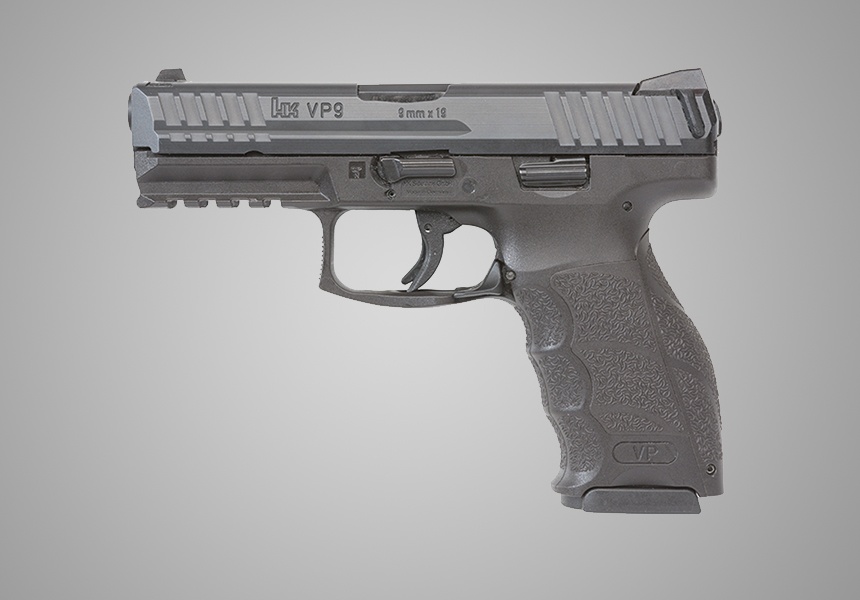
Full-size handguns are not one particular size, they are just the size that best fits their design as well as their function. Full-size handguns are usually made with maximum magazine capacity in mind as well as accuracy, an easy manual of arms, and reliability. Many full-size handguns in today’s market are geared towards Military, Law Enforcement or target shooting instead of concealed carry. This allows them a bit of freedom to make new designs, play with new features and experiment with caliber changes. Most full-size handguns have a capacity starting at 7 rounds and going up to 18 or 20 with a reasonably sized magazine depending on caliber.
While these handguns are sometimes more intimidating to folks who are not used to handguns, they should be told that these larger handguns of the same caliber, will generally shoot much more comfortably than a smaller gun. Sometimes small hands cannot properly grip these larger handguns, and that can be taken into account, but all other things equal, a larger gun will be better for a first-time shooter. These are some of the most common handguns chosen for duty use or open carry. Some common full-size handguns include:
- Glock 17/21/22/20/31
- SIG P320
- HK VP9
- S&W M&P Full Size
- SIG P226
Large Frame

Large frame handguns are generally geared towards more powerful calibers or with specific purposes like competition, hunting or just sheer enjoyment. These are often not in common calibers since a smaller gun can usually control the big 5 calibers. These firearms are generally not used for concealed carry as their size is an inhibition as well as the usual cost of these specialty handguns.
Generally, these guns in the common calibers are just full-size guns with some extra features and material, so the operating systems are similar to the ones discussed above. Some more powerful models must employ more complex locking mechanisms, such as the Desert Eagle which uses a rotating bolt, much like an AR15 or AK47; this is used because it fires a .357 Magnum, .44 Magnum, or .50AE cartridge. These are also sometimes competition guns as this type of pistol lends itself well to that style of shooting. Some examples of large frame handguns with common calibers include:
Modular Handguns

A recent advent of firearm companies is the idea of a modular handgun. Some companies *cough* Glock *cough* have claimed to be modular, without actually being modular. The MHS (Modular Handgun System) program from the Army did a great job of defining what a modular handgun needs to include. The Army stated that the, “MHS requirement called for a non-caliber specific weapon with modular features to allow for the adaption of different fire control devices, pistol grips, and alternate magazine options.”
This effectively means is that one should be able to change pistol grips, and fire control devices without needing to get to an armorer level of disassembly. What this means for an average Joe is that a modular handgun will allow you to purchase a handgun and change a lot of the handgun to suit your needs without a lot of work. The SIG M17, the gun that won the MHS competition, accomplishes this with a “fire control group” that is legally the firearm, in the eyes of the ATF. Once you purchase a P320 (the civilian version of the M17), you can purchase and change any number of the following aspects of the pistol with no tools, or minimal tools.
- Sighting system
- Size of grip
- Length of slide
- Magazine size
This can allow a shooter to customize a gun to their exact use case and wants depending on the shooter, environment or even caliber needed.
Final Thoughts
This introduction to types of pistols and some concepts related to them is just a primer to give you a start into handgun terminology and technology. Figuring out which pistol is right for you is a very personal choice and one that is often driven by exterior factors and the all important “feel” when it’s in your hand. Firearms are almost always a compromise, whether it’s power, size, weight, capacity or complexity; these tools are made to serve you in the best way possible and making sure you understand all of the aspects of the handgun can assist you in making your next purchase, or designing your next product.

